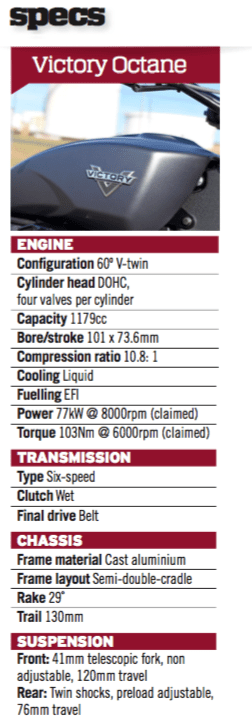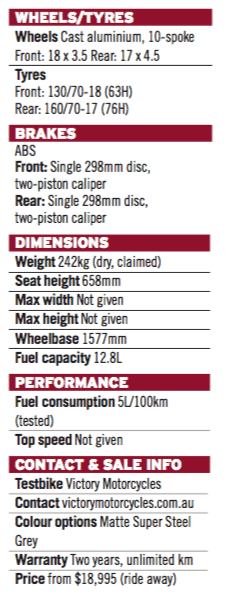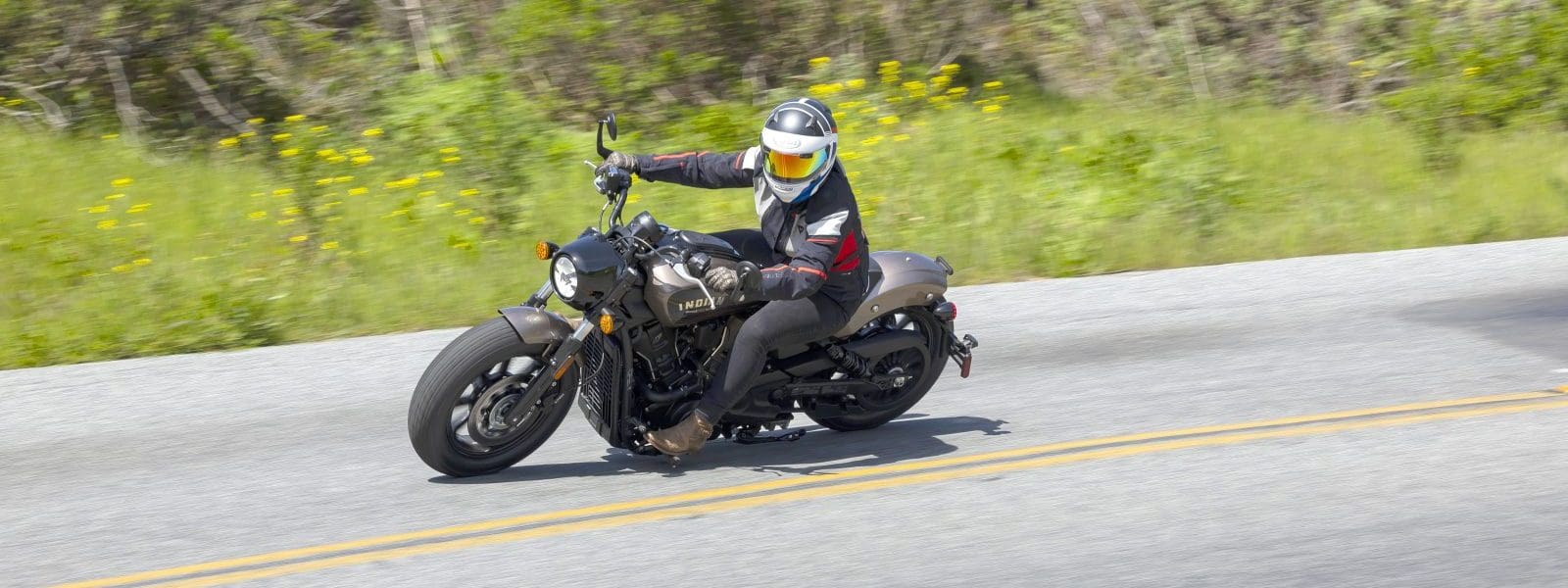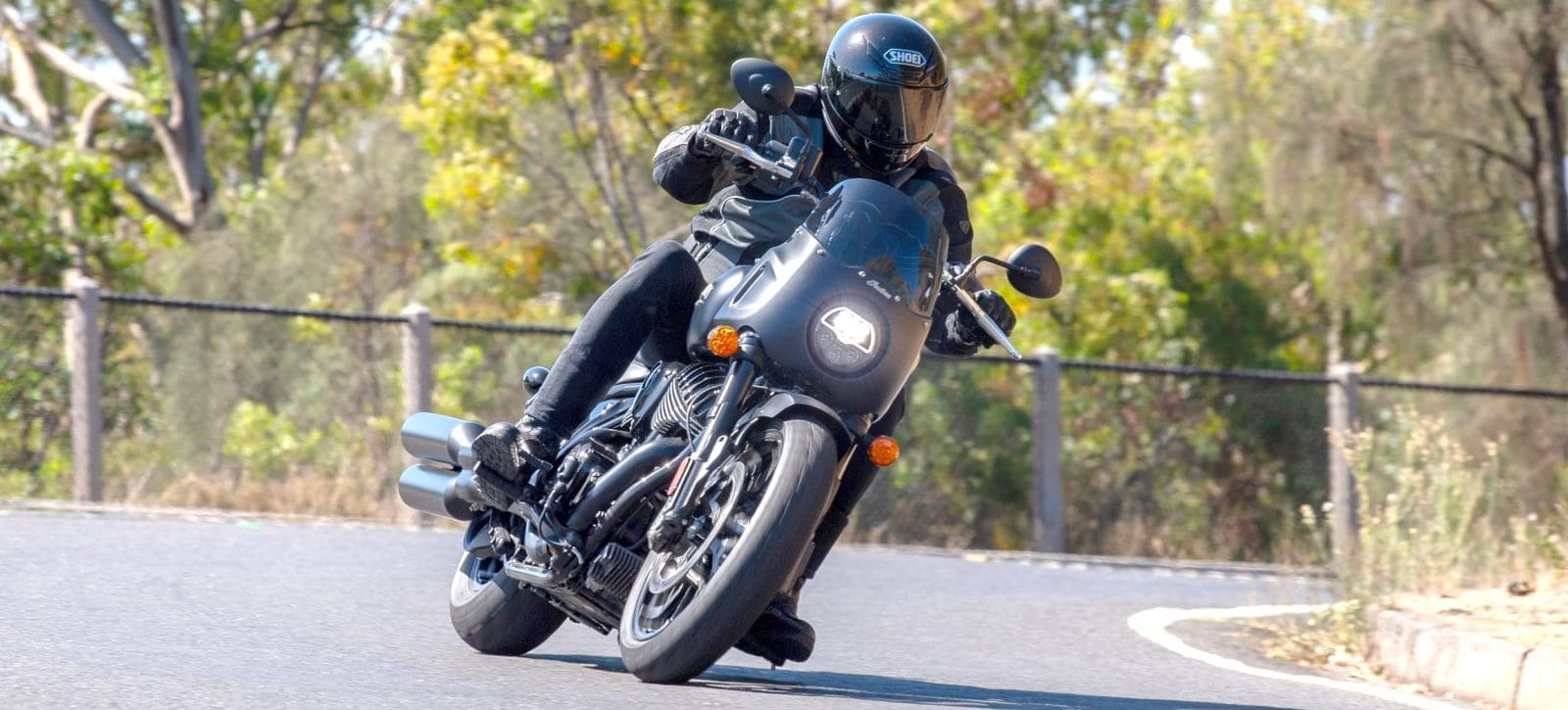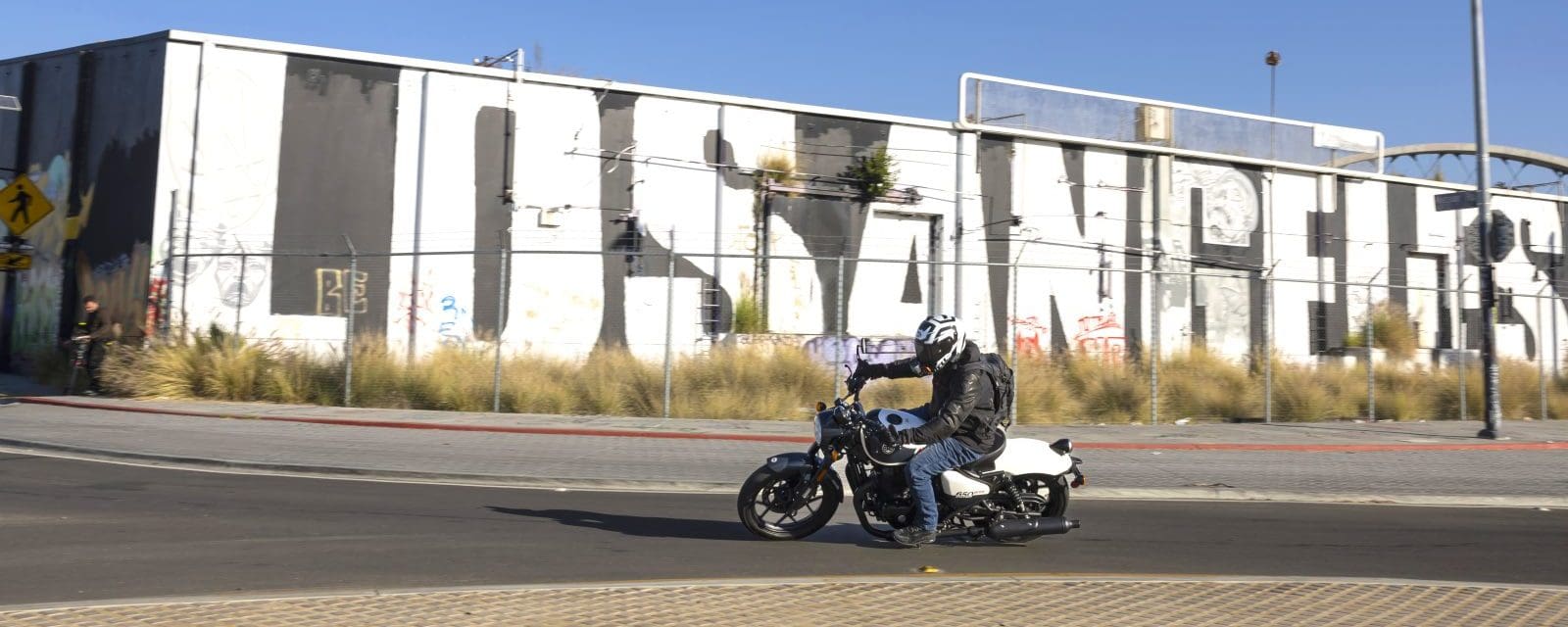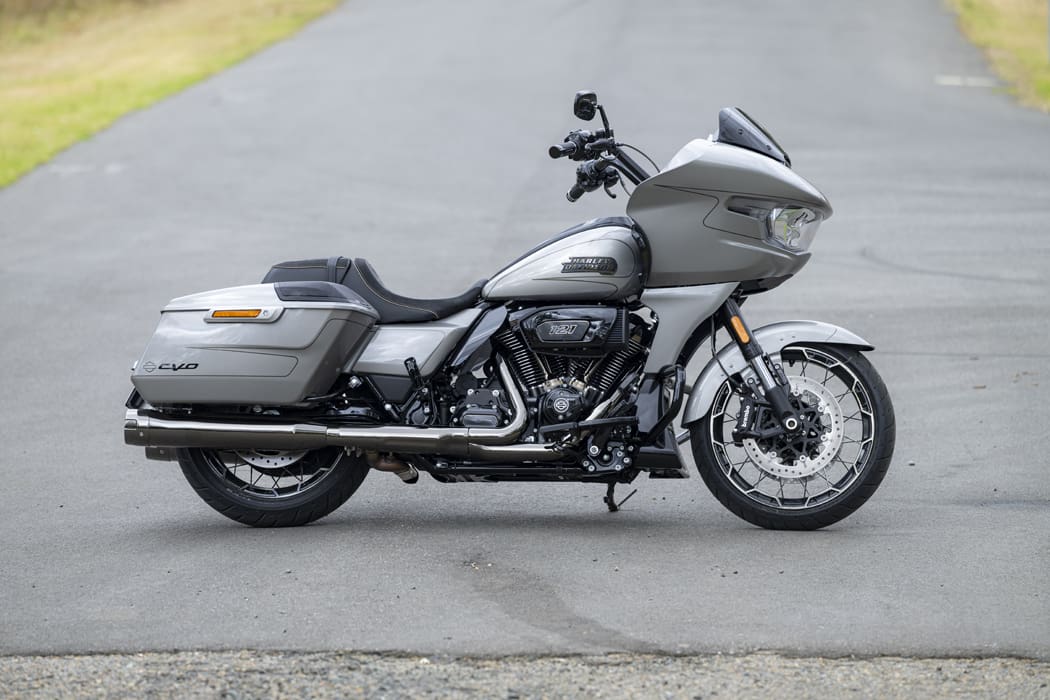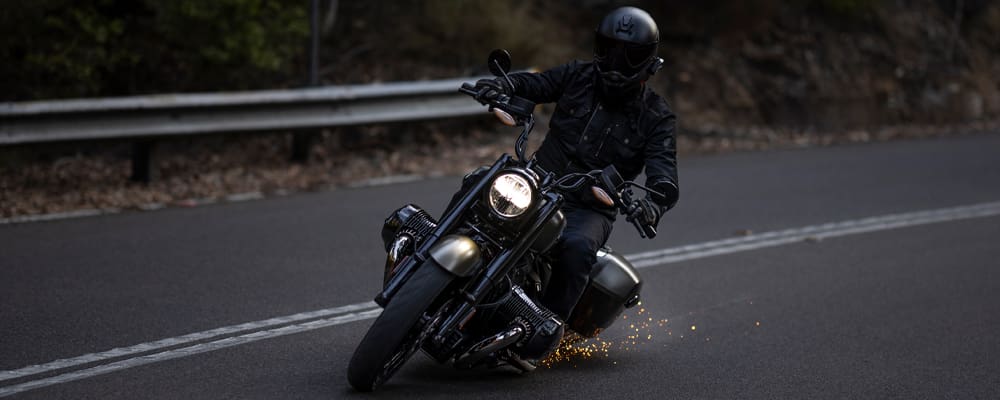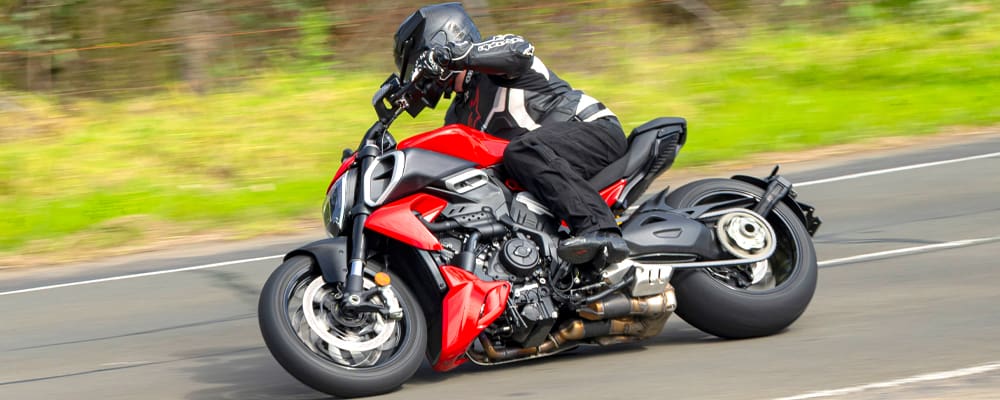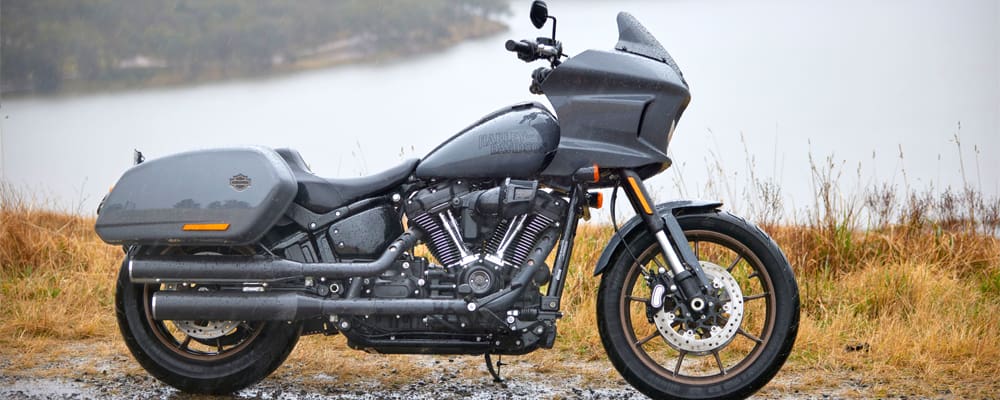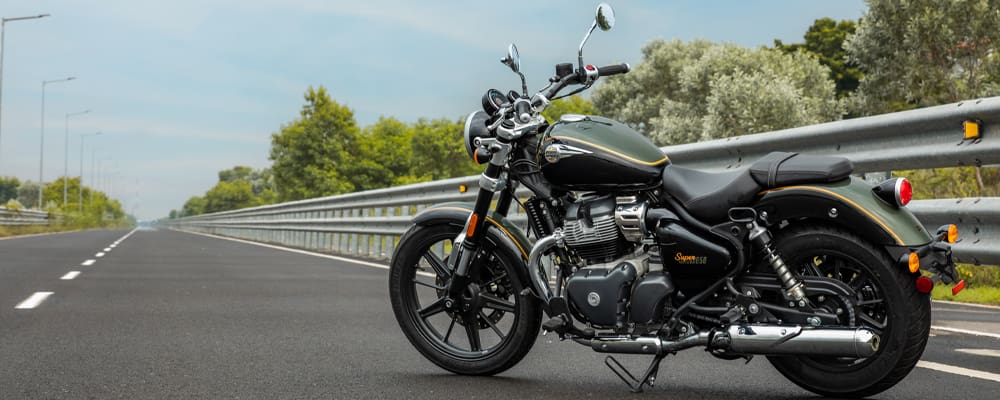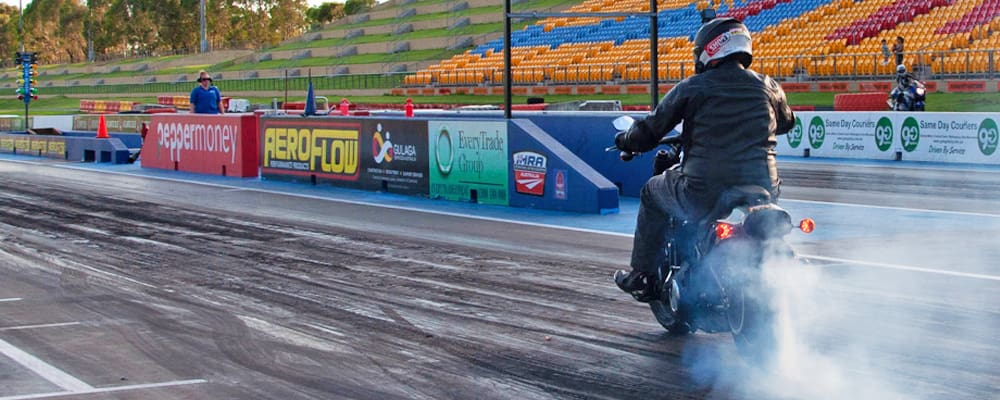On most start lines your heart is beating faster than the engine between your legs, that’s normal. But on this start line your lungs are also gasping for any atom of oxygen they can get. After all, you are already over 2800 metres above sea level. Some 20km of climbing, winding bitumen lie between you and the finish line that tops out at a whopping 4300m. Welcome to the Pikes Peak International Hill Climb.One of the prerequisites to tackling this iconic event, other than big kahunas, is the help of a potent motor, and this is one of the main reasons Victory Motorcycles turned up here last year. The team believed it would give them an ideal proving ground to help usher in a new era of Victory power plants – or potentiality send them crashing back down to sea level.
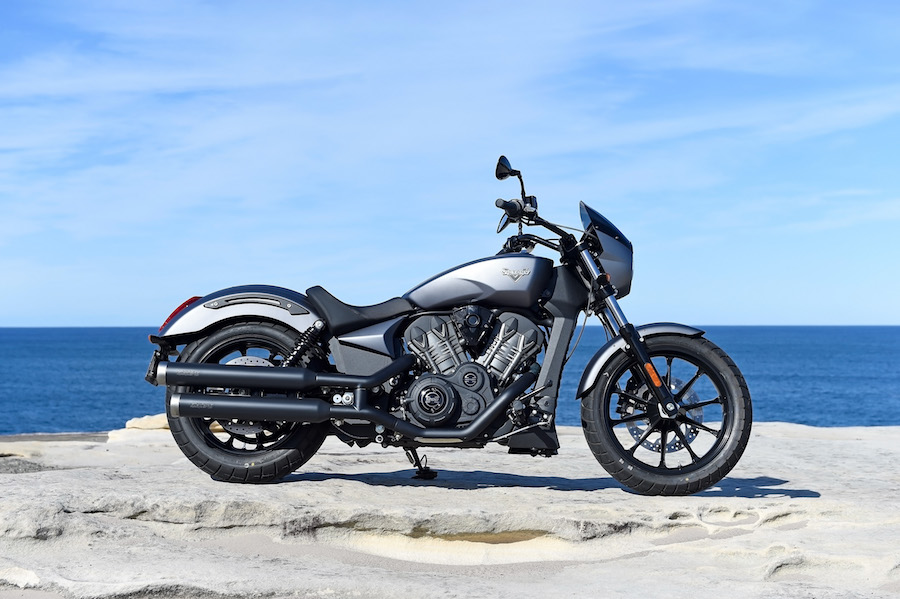
Just before the 2015 event, Victory racing pulled the covers off Project 156, fittingly named after the number of turns on the mountain road. This was a race-bred motorcycle built by custom guru Roland Sands and powered by a prototype Victory engine – an engine that Victory knew had to be powerful, reliable and versatile enough to conquer a 1500m elevation change.
The potential of this new engine was clear for all to see when the Project 156 qualified first in the exhibition class and fourth outright. A podium finish was on the cards until a small crash halfway caused enough damage to force the bike to retire only kilometres from the finish line.
Victory Racing may have left the Race to the Clouds without any silverware, but it got something maybe even better – the engine technology at the heart of the prototype racer. It was this technology that would go on to power the latest roadbikes from Victory, including the Octane.
Victory’s brief for this new bike was to bring the successful American muscle car formula to the two-wheeled world: “take a big motor, insert it into a lightweight chassis and then delete any comforts or other unnecessary accessories”. So by wrapping the most powerful Victory engine in the lightest motorcycle they have ever built, the engineers nailed two key aspects of the formula. Even before you swing a leg over the bike, it looks good on paper.
Powering the all-new Octane is a 1200cc, liquid-cooled, dual overhead cam, four-valve V-twin. This is Victory’s first ever water-cooled engine and also the most powerful mill produced out of the Iowa factory. Running at a compression ratio of 10.8:1 and with the help of a bore and stroke of 101 x 73.6mm, it makes a claimed 77kW at 8000rpm and a tyre-shredding 103Nm at 6000rpm.
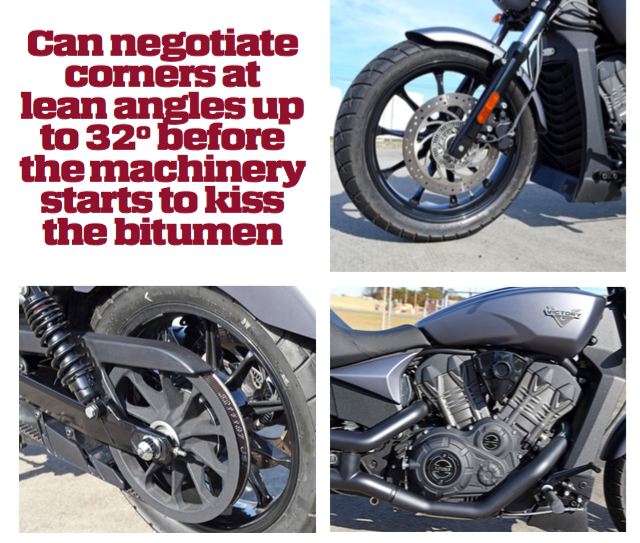
Thumb the starter button and the Octane awakens into a smooth yet aggressive V-twin idle. There are just enough vibes to satisfy your inner senses and confirm that you are sitting on a 1200cc V-twin. As this engine was developed from the Project 156 powertrain, it has received quite a short stroke, making the engine quick revving, very responsive and markedly different to other Yank twins. It took me a few miles to realise what this engine benefits most from – revs! Yes, it still has the good ol’ low-down torque to be able to thump its way down the open highway and manage top-gear overtakes, but now it also has the ability to traverse a very-wide range of revs.
As you wind on the throttle the engine effortlessly spins up with a crisp response; power builds strongly from low in the rev range and continues to pile on considerable speed as the revs rise. When you go to snick the next gear – as you normally would on a cruiser – a quick glance at the centre mounted LCD screen will show only 4000rpm, not even halfway to the engine cut-out. As you resist the urge of your left foot and continue to allow the revs to climb through 7000rpm (yes 7000rpm) there is still no sign of the engine running out of puff. Only just before the 8500rpm cut-out does the engine yearn for the next gear.
Throughout the entire rev-range power is made smoothly and energetically, with no dips or surges. This is supported by an electronically metered 60mm throttle body. The test bike was also fitted with the Victory Stage 1 slip-on mufflers that boom an ear-pleasing bark on acceleration, which is complemented by a sublime crackle on the overrun. The Stage 1 mufflers offer the perfect balance between ‘is this engine even running?’ and a socially irresponsible soundtrack. A must-have accessory in my book.
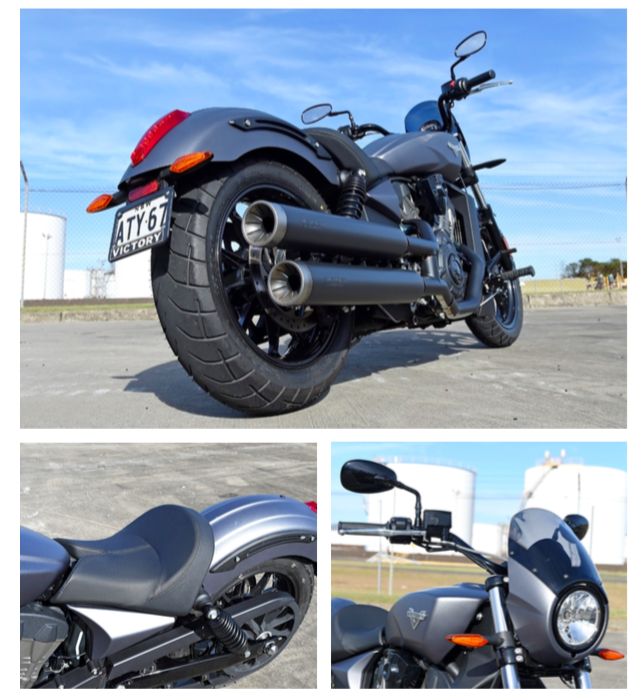
The engine sends its power through a six-speed ’box that doesn’t have that loud cumbersome clunk of some other big V-twin cruisers. Slicing between gears is smooth and direct, but neutral can be a bit tricky to find at a standstill. The cable-operated clutch is on the lighter side of the cruiser market and offers adequate feel throughout its entire actuation. The gearing is quite short which helps the Octane race to the ton in under four seconds and should be good for a 12-second pass at the strip.
To help keep the bike to its dry weight of 242kg, the engine is a stressed member in the cast-aluminium semi-double-cradle frame, and steel backbones are added for increased rigidity. A 41mm fork set at a rake of 29º is equipped with dual-rate springs, while the rear makes use of pre-load adjustable laydown shocks mounted at 53º off horizontal
On the open highway the Octane maintains its poise over bumps. Only the harsher ones make their way through the seat and up into your lower back. Where the bike really starts to shine is in the twisties – not the usual strong point for cruisers. The front end offers positive feedback from tip in to corner exit, the Octane holds its line well, and any mid-corner inconsistencies are dealt with confidence. The wide handlebar aids in a precise and accurate tip in, while also giving good leverage to the rider from corner to corner.
As the forward footpegs are mounted quite high, the Octane has good ground clearance for a cruiser and is able to negotiate corners at lean angles up to 32º before the machinery starts to kiss the bitumen. What this number means out in the real world is that touchdown only happens well above the legal limit during some very spirited riding. When it does happen the motorcycle remains balanced and eager for the next corner – admittedly with a slightly shorter footpeg.
One aspect you really get to test out at a photo shoot is the motorcycle’s slow speed manoeuvrability and its U-turn capabilities, and the Octane passed this test with flying colours. Weight is kept low which inspires slow-speed confidence and makes feet-up U-turns a breeze. And thanks to the low 658mm seat, if any mishaps do arise there wouldn’t be a rider out there who couldn’t get both feet firmly on the ground.
The Octane is hauled up by a single 298mm disc up front that is squeezed by a two-piston caliper, while the rear an identically sized disc is pinched by a single-piston caliper. If you do need to stop in a hurry, using both brakes is a must as the front package does reach its limits easily. All the brake lines are braided, which assists in a good and predictable feel through both the front and rear units, however, a larger front package would be nice.
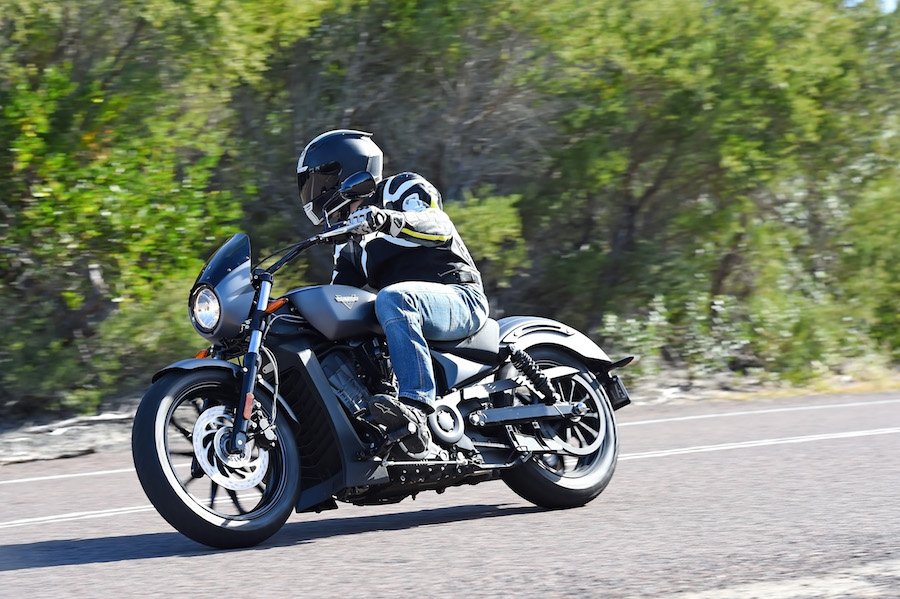
The only electrickery on the Octane is the fitment of ABS. The system pulsates quickly when called upon and the motorcycle remains stable. There is no traction control, which isn’t a deal breaker as the Octane gets its power to the ground in such a calculated manner. Cruise control is probably the only electronics that would be a welcome addition.
The dash is large and easy to read. It features a sizeable analog speedo and small centrally mounted LCD screen with clock, trip meters, gear indicator and a digital tachometer among other info. One nifty feature is the inclusion of self-cancelling blinkers in the event you leave the flasher on. The long-stalk mirrors offer good vision of the past and even when cruising along the highway in top gear at 4000rpm the vibes are so minimal they remain clear.
The Octane has a low, aggressive stance that oozes street-cred. Its styling has a somewhat Harley-Davidson V-Rod look about it and does share a striking similarity with the Indian Scout, admittedly with a bit less chrome work. Most of the engine, the frame and the two-into-two exhaust system are all blacked out to help accentuate that menacing look. The 12.8L matte-grey tank flows seemingly into the single-seat, which then carries that quality over into its join with the rear fender.
The single seat is plush and after many miles in the saddle there were no complaints from my backside, and with a fuel consumption of 5L per 100km a 200km-plus jaunt is easily doable. There is a passenger seat available as an optional extra for two-up riding. The forward controls and wrapped-back handlebar guide your body into a neutral riding position, while the small screen offers a tiny bit of wind protection, but is more for looks. The brake light and blinkers are all LED which adds to a more elegant look.
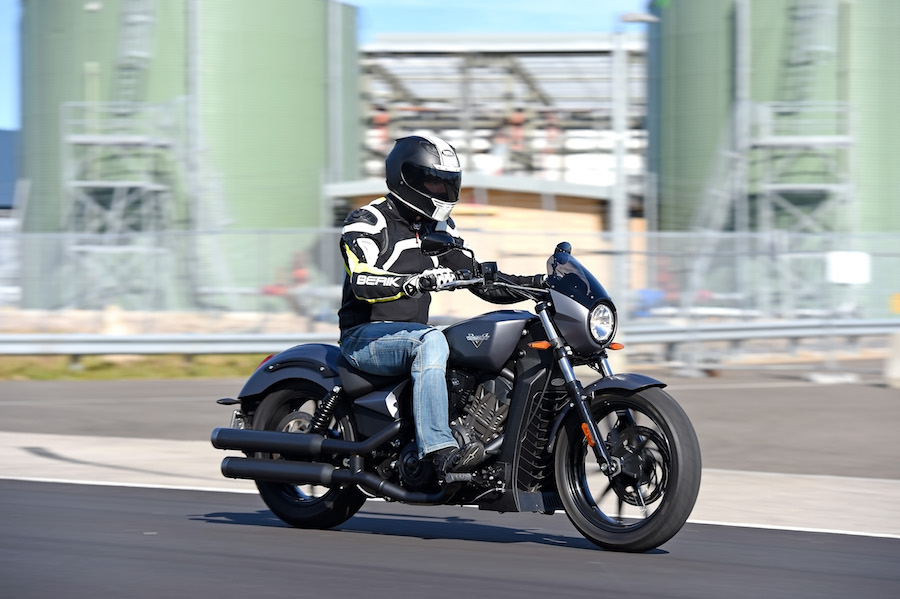
At $18,995 ride away with two years unlimited kilometre warranty the Octane is priced on par with its direct competitors the Indian Scout and Harley-Davidson Roadster. All offer around a 1200cc engine in a sports cruiser-chassis for under 20 grand. Have a look at the competitor box to see the intricate differences between the models.
Victory has created an engine that is a true gem. Its free-revving nature and crisp throttle response, coupled with its ability to make power from as little as 1500rpm all the way to 8000rpm has transformed what an American V-twin can be like. And wrapping it in the lightest motorcycle that Victory has ever created – all I can say is thank you Pikes Peak and thank you Project 156.
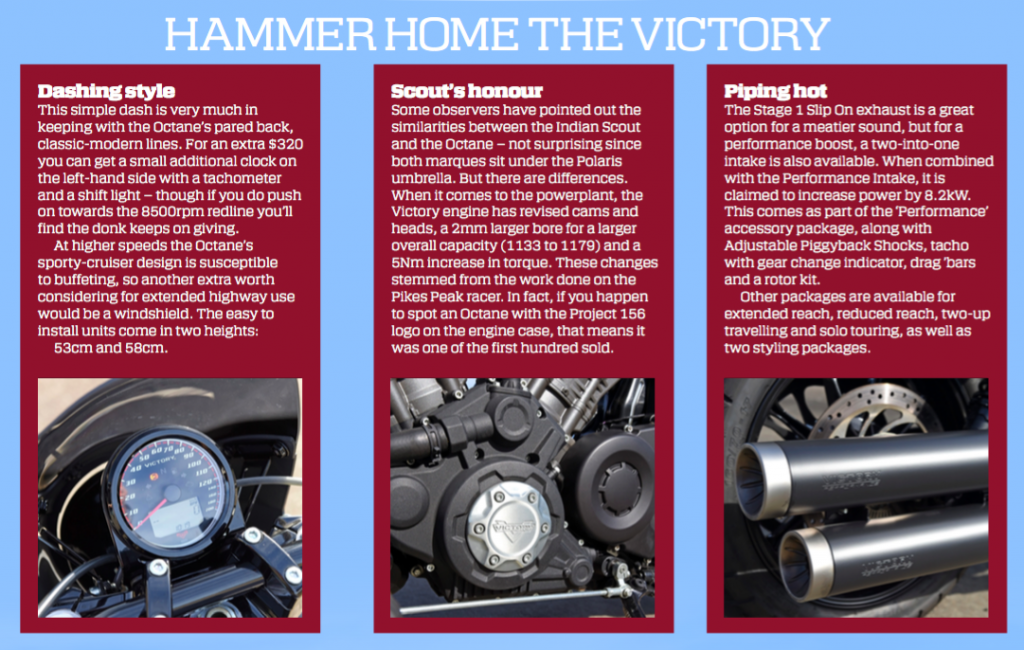
American opposition
Indian Scout
Released around just a little earlier, and from the offshoot marque of the same parent company (Polaris), it could easily be mistaken for the Octane. Styling is very similar from afar, but the Indian makes use of more chrome and has larger fenders and a slightly different exhaust design. At 1133cc the engine is the smallest of the three, but thanks to the technology of water-cooling the unit produces a claimed 74.57kW and 97.7Nm, slotting it in between the Octane and the Roadster.
The braking package, including fitment of ABS, is identical, and although the Indian is 2kg heavier than the Octane the braking performance would be very similar. Suspension is comparable and offers the same amount of travel. The Indian is fitted with smaller 16-inch rims and a slightly thinner 130-width rear tyre – a by-product of this is a seat 23mm (635mm) lower than the Octane’s.
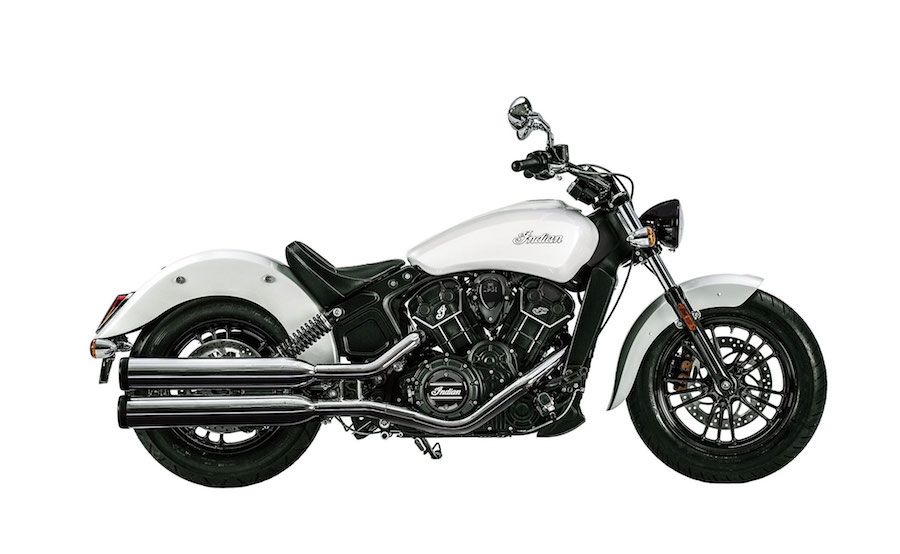
Harley-Davidson Roadster
At 1202cc the Roadster’s engine is the biggest of the three, but unlike the other units the Milwaukee marque opted to stay true to its tried and tested air-cooled design. Harley doesn’t publish power figures, but does claim the engine is good for 97Nm at 4250rpm. While this doesn’t trump its competitors, peak torque is made almost 2000rpm lower than its water-cooled counterparts. Final drive is chain unlike belt on the other two.
Up front the Roadster makes use of a 43mm inverted fork that sports a floating twin-disc braking set-up coupled with an ABS system. This is the braking package that both the Indian and Octane would benefit from. The seat is higher at 785mm and the roadster tips the scales at 250kg. There’s a 19-inch front wheel, while the rear makes use of a 150-width 18-incher. Fuel tank capacity of 12.5L is identical to the Indian’s and slightly less than the 12.8L tank fitted to the Octane. At $19,495 ride away it is positioned smack bang in-between the Octane and Scout.

Be it Harley-Davidson, Indian or Victory, American motorcycle companies don’t shy away from offering aftermarket goodies. The Octane is no different with a plethora of options.
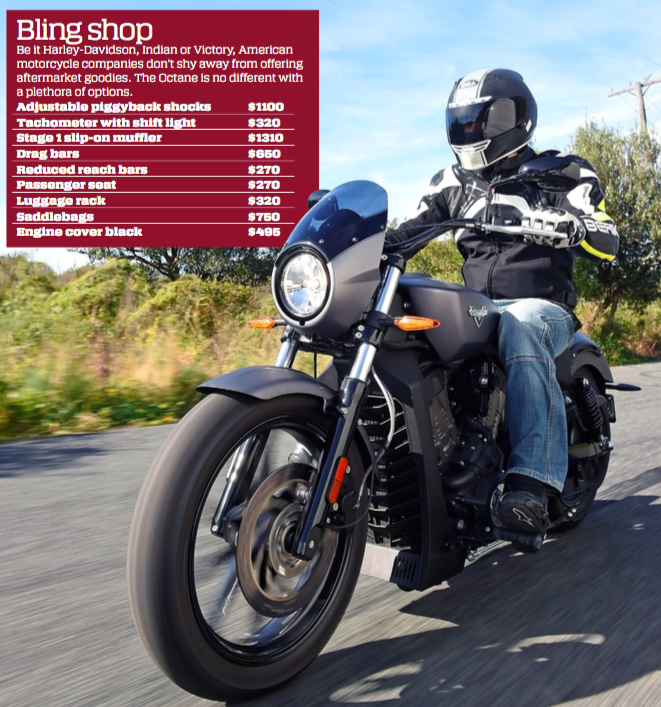
TEST ALEX PENKLIS PHOTOGRAPHY KEITH MUIR
